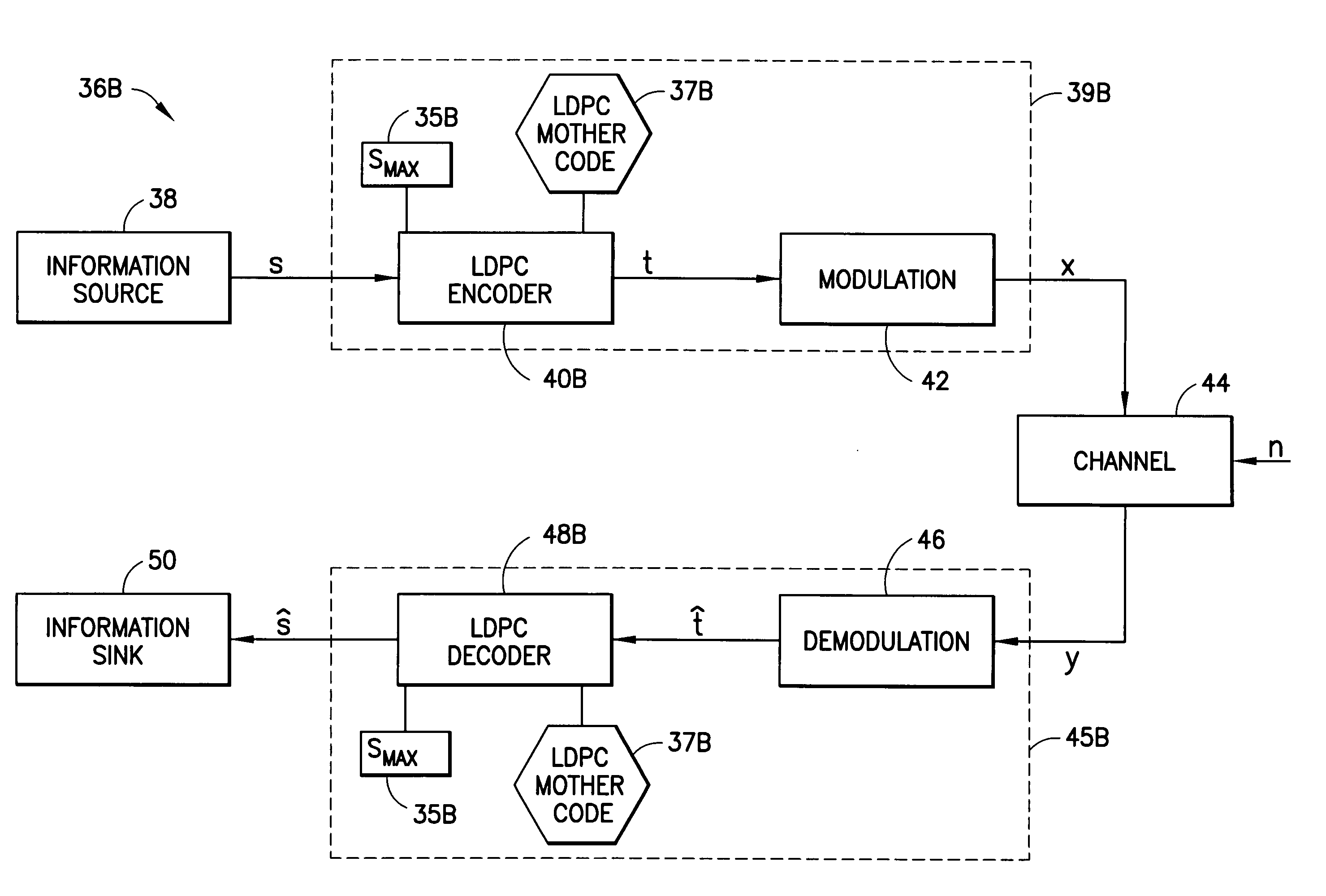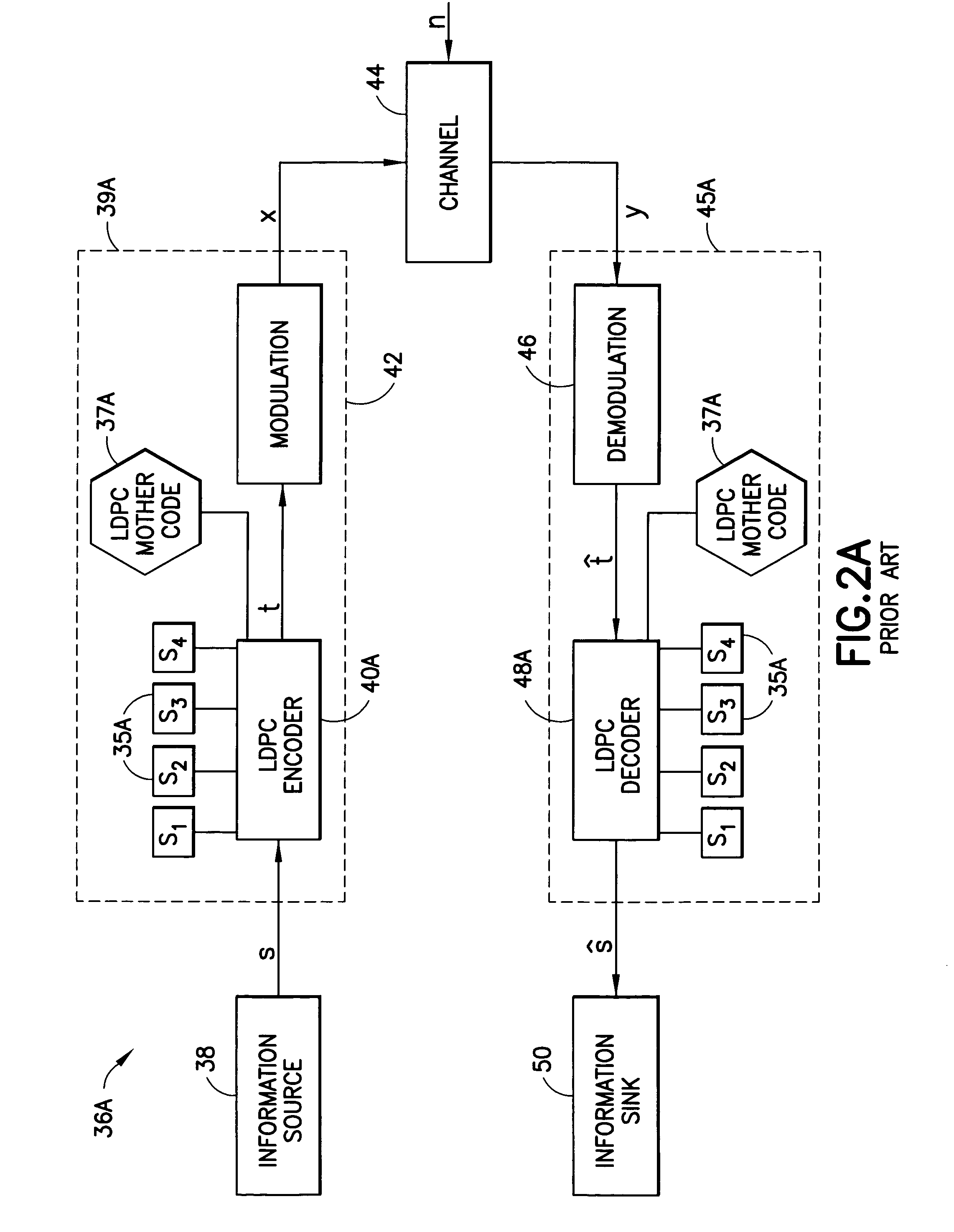Low-density parity-check codes for multiple code rates
a parity-checking and code rate technology, applied in the field of parity-checking codes for encoding and decoding transmissions, can solve the problems of limited codeword size, and inability to meet the requirements of encoding and decoding, so as to reduce the memory requirements and memory requirements. the effect of less memory
- Summary
- Abstract
- Description
- Claims
- Application Information
AI Technical Summary
Benefits of technology
Problems solved by technology
Method used
Image
Examples
examples
Following are examples of various puncturing probabilities for various length LDPC codes realized randomly from the following code ensemble described by the distributions of the variable edges 30 and the check edges 31:
λ2=0.25105ρ7=0.63676
λ3=0.30938ρ8=0.36324
λ4=0.00104
λ10=0.43853
[0059]These edge distributions 30, 31 correspond to a 0.5 code rate where {λ2, λ3, λ4, λ10} correspond to the fraction of total variable edges 30 connected to variable nodes 26 of degrees {2,3,4,10} respectively and {ρ7, ρ8} correspond to the fraction of total check edges 31 connected to check nodes 28 of degrees {7,8} respectively.
[0060]FIG. 7 is a graph illustrating the puncturing probabilities {π2(0), π3(0), π4(0), π10 (0)}(corresponding to the variable degrees of {2,3,4,10} respectively) versus the effective code rate for the puncturing sequence derived from the greedy algorithm based on a target BER within a finite number of iterations using the GA BER expression (presented above) of a length N=1082 LDP...
PUM
 Login to View More
Login to View More Abstract
Description
Claims
Application Information
 Login to View More
Login to View More - R&D
- Intellectual Property
- Life Sciences
- Materials
- Tech Scout
- Unparalleled Data Quality
- Higher Quality Content
- 60% Fewer Hallucinations
Browse by: Latest US Patents, China's latest patents, Technical Efficacy Thesaurus, Application Domain, Technology Topic, Popular Technical Reports.
© 2025 PatSnap. All rights reserved.Legal|Privacy policy|Modern Slavery Act Transparency Statement|Sitemap|About US| Contact US: help@patsnap.com



